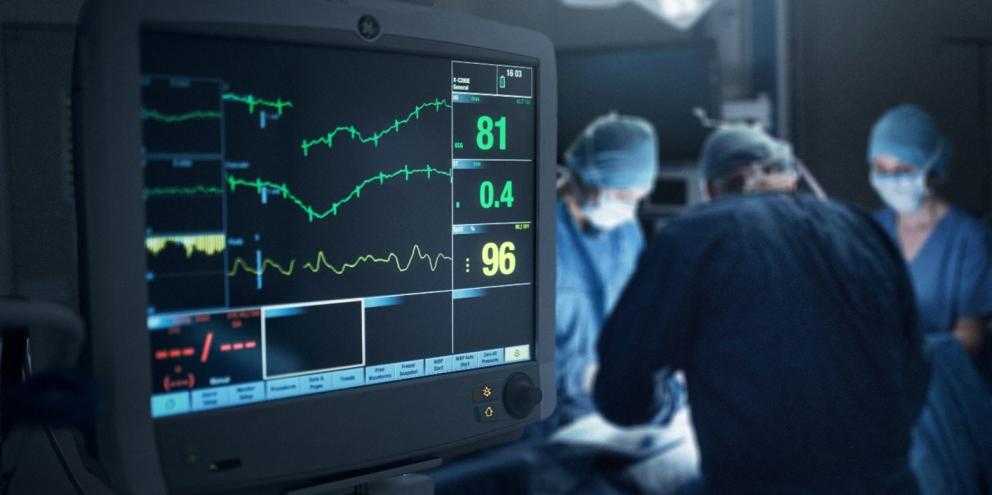
The operating room (OR) is one of the most cost-intensive environments in any hospital, making efficient OR management a must for every organization. However, proper OR management is a complex process, involving a multitude of decisions from resource allocation and staffing to the use of low flow techniques in order to reduce costs and drive climate-conscious anesthesia.
To make these decisions medical organizations have traditionally relied on labor-intensive, manual approaches such as spread sheets. However, such approaches are inherently costly, inaccurate, inefficient and time-consuming.
That’s why in this article, we’ll discuss the role of data-driven analytics and how the use of technological solutions can enable organizations to assess, analyze and act on their data more efficiently to contain costs, support medical staff and better serve their patients.
Using Data to Improve OR Workflow
Improving OR workflow is a necessity to maximize throughput as keeping procedures flowing smoothly has an outsized impact on a hospital’s bottom line1. An under-booked OR is a waste of resources, costing a hospital money that could be used to fund other areas of the organization. In fact, workflow and scheduling issues can reduce OR utilization by 10% per year, and it’s estimated that operating room delays cost more than $60 per minute2, 3. On the other hand, an over-booked OR can lead to staff frustration, as well as dangerous delays in proper patient care post-surgery1.
Yet, using advanced data analytics platforms that allow hospitals to harness the data they already have available can help mitigate these issues and better run their OR. Applications that algorithmically determine case phase and OR status in near real time, without the need for manual data entry, can help:
- Increase OR utilization and case revenue
- Effectively prioritize OR turnover
- Make sure PACU beds are ready when needed
- Easily visualize case phase
All of this can positively impact the allocation of resources, improve staff satisfaction and better support high-quality patient care.
Harnessing Analytics to Reduce Agent Costs
Workflow isn’t the only area where organizations can use data-driven analytics to drive improvements and reduce costs. Advanced data analytics platforms are now capable of analyzing anesthesia fresh gas flow data at the induction and maintenance case phase, and then translating it into anesthetic agent utilization and costs in order to drive low-flow anaesthesia practices.
And when you consider that anesthetic agents are the single largest on-going expense in an
anesthesia unit, this is an extremely valuable benefit. Since it’s estimated that high gas flow gas rates can cost hospitals an additional 15–30% on anesthetic agents, it’s easy to see how leveraging these data practices can translate to real cost savings4.
Harnessing Data to Improve Environmental and Staff Safety
In addition to the cost savings organizations can realize with reduced agent use, hospitals that use data-driven analytics to drive low-flow practices are also doing more to support both the environment and their staff.
After all, agent release into the OR atmosphere can result in extra greenhouse gases that are the equivalent of up to 350 cars per year, which are gases that the OR staff are exposed to at their highest concentrations5, 6.
Putting Data to Work to Drive Improvements in OR Supervision
Finally, leveraging a platform that allows for the quick access of relevant patient and anesthesia data when not in the OR, could significantly simplify the process of supervising multiple operating rooms, prioritizing activities and delivering medical direction.
High-fidelity data can be captured and organized, offering real-time insight into patient status, and anesthesia delivery. This data can also help determine whether additional OR support is required, promote clinician adherence to protocols and enable clinicians to prioritize medical direction.
CarestationTM Insights Applications: Analytics Simplified to Help Drive Change
Together with the Aisys™ CS2 Anesthesia Delivery Systems, GE HealthCare’s Carestation Insights mobile applications puts the power of data-driven analytics at your fingertips. An intelligent OR ecosystem, which captures and analyses high-fidelity data on patient cases, utilizes advanced algorithms in data interpretation to uncover valuable insights, which in turn can be leveraged to support decisions that enhance patient care, support financial and clinical goals and make a positive environmental impact.
A hospital’s data possesses extensive potential to enhance patient outcomes, improve working conditions and save money. However, these goals are only attainable if that data can be accessed and used effectively. Carestation Insights analytics applications makes this possible by analysing breath-to-breath perioperative data to find actionable insights that help clinicians drive improved outcomes.
References
1: Krueger, R. (2017, October 19). How hospitals can use analytics to improve surgical suite performance. Health Data Management. https://www.healthdatamanagement.com/articles/how-hospitals-can-use-analytics-to-improve-surgical-suite-performance
2: NHS Institute for Innovation and Improvement. The Productive Operating Theatre. http://www.institute.nhs.uk/images//documents/Quality_and_alue/Productive%20Operating%20Theatre/Finance%20leaflet.pdf
3: Improving the economy of surgical services, Part 4. Strate, Cody. The Cost of a Lost Minute in the OR. Jun 22, 2018. https://www.accessefm.com/blog/the-cost-of-a-lost-minute-in-the-or
4: Hospitals can be spending an extra 15–30% for anesthetic agents in an OR due to high flow estimates derived from the GE HealthCare ecoFLOW Calculator. https://gehealthcareamer.my.salesforce.com/sfc/#version?selectedDocumen…
5: Environmental Protection Agency. Emissions facts: greenhouse gas emissions from a typical passenger vehicle.http://www.epa.gov/oms/climate/420f05004.htm#key
6: Global Warming Potential of Inhaled Anesthetics: Application to Clinical Use, Susan M. Ryan, MD, PhD, and Claus J. Nielsen, CSc International Society for Anaesthetic Pharmacology www.anesthesia-anelgesia.org July 2010; v111 #1.
© 2023 GE HealthCare
GE is a trademark of General Electric Company used under trademark license. Reproduction in any form is forbidden without prior written permission from GE HealthCare. Nothing in this material should be used to diagnose or treat any disease or condition. Readers must consult a healthcare professional. Carestation and Aisys are trademarks of GE HealthCare.
JB24496XX







